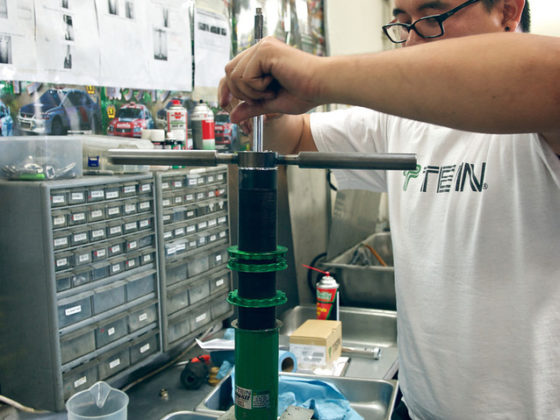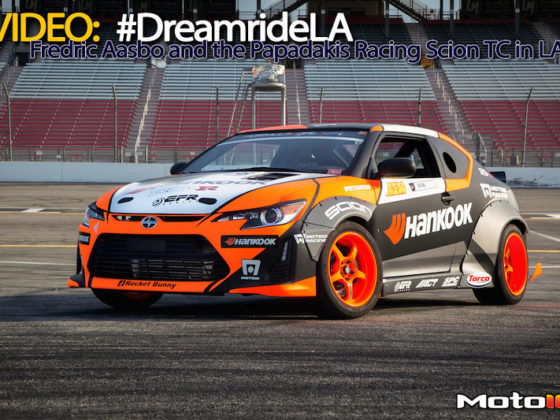,
Thanks to Anaheim Gear near DisneyLand Resort (as a reference point for you readers who live outside of Southern California), I had my trans back in a 24 hour turn around time and a fully functioning 3rd gear. I was told by their main tech that the rest of the internal components were in solid condition, the only reason 3rd was having issues was because the syncro spring had broken. For a trans shop this was an easy fix and they had the required parts in stock. The reinstallation of the transmission was a bit more difficult then the removal unfortunately. Mostly because of the fight against the weight of the gear box itself while trying to line up the input shaft. With the assistance of a close friend we were able to get the trans mounted to the engine block in no time.
The next piece of the puzzle was sorting out a wheel package for the car. For FWD cars I've always preferred a “reverse stagger” setup, wider front wheel/tire width then the rear for the added front grip and heat capacity. However, with one of the rules for the MPTCC series stipulating that the same tires have to be used for the entire race weekend (so practice, qualifying, and 30 minute sprint race both Saturday and Sunday), I wanted to be able to rotate the wheels and tires front to back mid weekend with minimal difficulty and cost. So I decided to run a more traditional “square” wheel/tire setup, a 15×8 wheel and a 225/45/15 tire to be exact. Thanks to Rays Engineering, I was able to acquire a set of Gram Light 57DR wheels in 15×8 et35 offset, which is perfect fitment for the EF body panels and suspension design. Tipping the scales at 13lbs per wheel, which is good for a non forged wheel, the unsprung and rotational weight is kept low which is critical since Project EF does not produce big torque.
 My set of Rays Engineering Gram Lights 57DR's in 15×8 et35 waiting to be mounted onto Project Civic EF. I can't thank my wonderful girlfriend Ashley enough for letting me borrow these BFGoodrich Rival extreme performance street tires for the test day. Despite being used they were still in good condition and are proven fast on track.
My set of Rays Engineering Gram Lights 57DR's in 15×8 et35 waiting to be mounted onto Project Civic EF. I can't thank my wonderful girlfriend Ashley enough for letting me borrow these BFGoodrich Rival extreme performance street tires for the test day. Despite being used they were still in good condition and are proven fast on track. Another important factor was getting a brake setup that would be able to withstand on track pace. Project Civic EF came on DA Integra brakes with Hawk HP+ pads all around. Even though the HP+ is a fine entry level track pad, I knew from my past experience that it wouldn't be up to the task at Buttonwillow Raceway. Also, the DA front calipers despite being a good upgrade over the original Civic brakes, are limited in terms of their race pad selection. The rear DA calipers accept the same pad shape as all rear disc setups throughout the 90s minus “Type R” calipers. Luckily for me, the DC2 Integra GSR front calipers bolt right up to my current DA knuckles and rotors and have a wide selection of brake pads. This caliper swap allowed me to take advantage of race pad offerings from Winmax USA. Winmax is a company based out of Japan with a history in both Rally and Gymkhana. Over the last few years they have expanded their market to the US through Cusco USA's office in Southern California. After talking closely with one of Winmax's race engineers, we opted for the “W4” compound front and rear.
 All Winmax brake pads come in these cool gold boxes with easily identifiable stickers showing the designated compound on the front. Their compound range is simple, ranging from “W1” to “W7”, the pad aggression and track bias goes up in direct correlation with the numbers. “W1” being a daily driven sport pad and “W7” being a high temp, high friction race only pad.
All Winmax brake pads come in these cool gold boxes with easily identifiable stickers showing the designated compound on the front. Their compound range is simple, ranging from “W1” to “W7”, the pad aggression and track bias goes up in direct correlation with the numbers. “W1” being a daily driven sport pad and “W7” being a high temp, high friction race only pad.  The DC2 Integra GSR front calipers bolted up with zero issues to the DA Integra front knuckles and rotors. The Winmax W4 pads make their presence known with the gold hue. Another big thanks to my friend and fellow EF Civic track car owner Tom for these calipers.
The DC2 Integra GSR front calipers bolted up with zero issues to the DA Integra front knuckles and rotors. The Winmax W4 pads make their presence known with the gold hue. Another big thanks to my friend and fellow EF Civic track car owner Tom for these calipers.  Since the rear brake pads, calipers, and rotors are significantly smaller than the fronts, the decision was made to run the same “W4” compound out back. Being that there's a big stagger in the brake size front to rear, the bias should be close to ideal even with the same compound.
Since the rear brake pads, calipers, and rotors are significantly smaller than the fronts, the decision was made to run the same “W4” compound out back. Being that there's a big stagger in the brake size front to rear, the bias should be close to ideal even with the same compound. 


